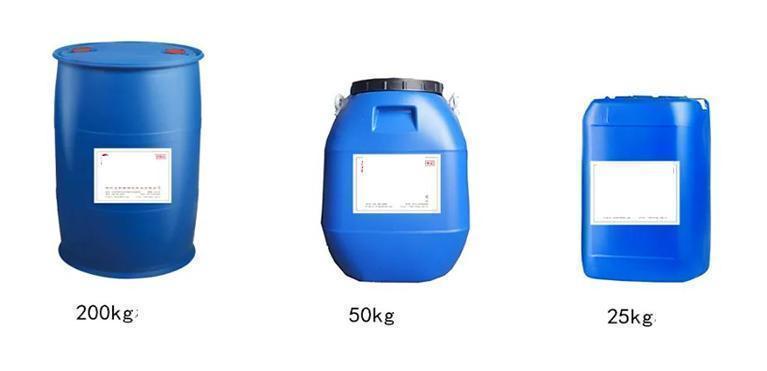The emergence of true industrial cleaning, with only a history of a few decades, has brought enormous economic and social benefits to industrial production. With the rapid development of cleaning technology, industrial cleaning has been involved in almost all industrial fields, such as textile printing and dyeing, petrochemicals, machinery, mining and smelting, surface treatment, chemical industry, instrumentation, electronics, semiconductor, watch and jewelry, biology, optics, and others. This illustrates the immense market potential and rapid development momentum of industrial cleaning.
Typically, based on the principles of cleaning action, industrial cleaning agents can be classified into chemical cleaning, physical cleaning, and microbial cleaning. Chemical cleaning, which has the longest history of development, the widest application, and the most extensive variety, is the most common. Moreover, based on the different water content in chemical cleaning agents, they can be roughly categorized into three types: organic solvent-based cleaning agents, water-based cleaning agents, and semi-water-based cleaning agents.
This article will introduce the formulation, cleaning effects, and future development directions of these three types of chemical cleaning agents separately.
Organic solvent cleaning agents primarily refer to formulations that do not contain water-based organic solvents. Most of these solvents are hydrocarbons (alkanes, aromatic hydrocarbons), chlorinated hydrocarbons, fluorinated hydrocarbons, alcohols, and alcohol ethers. The mechanism of action for organic solvent cleaning mainly involves directly dissolving substances that are insoluble in water but soluble in organic solvents, such as oils, waxes, resins, rubbers, dyes, and some organic contaminants.
The characteristics of organic solvent cleaning agents include being liquid and fluid at room temperature and pressure, low viscosity, strong volatility, minimal or no residue on the surface after cleaning, and no corrosion or damage to the substrate during the cleaning process.
The volatility of organic solvents also means that they can easily enter the environment due to their low boiling points. Chlorinated hydrocarbons such as chlorinated hydrocarbons and fluorinated hydrocarbons are harmful to human health, while alcohols and alcohol ethers have lipophilic properties, posing significant risks to animals, humans, and the environment. For example, chlorofluorocarbons (CFCs), carbon tetrachloride, trichloroethane, and brominated alkanes have been banned for use despite their excellent cleaning and economic benefits due to their detrimental effects on the ozone layer, posing risks to Earth's safety, and their difficult collection and disposal of residues.
Early aqueous-based cleaning agents primarily utilized strong inorganic alkalis or inorganic salts. However, due to their single formulation and high alkalinity, these cleaners often had many drawbacks, resulting in compromised cleaning effectiveness. Modern aqueous-based cleaning agents have overcome these limitations by incorporating surfactants, chelating agents, corrosion inhibitors, stabilizers, solubilizers, and various other components tailored to different cleaning objectives and substrates.
For instance, in the pre-electroplating degreasing process, a combination of polyether, triethanolamine oleate, sodium fatty alcohol polyoxyethylene ether sulfate, and other ingredients is used. This formulation is generally non-corrosive to substrates, requires no heating during use, produces minimal foam, offers excellent cleaning efficacy, requires minimal usage, has low costs, is easy to operate, non-toxic, environmentally friendly, and suitable for both manual and mechanical cleaning processes. Additionally, post-cleaning treatment is simple.
The formulation adjustment of aqueous-based cleaning agents is also applicable to achieving multiple goals simultaneously. For example, in the cleaning of copper parts, polishing agents can be added to the cleaning agent formulation to achieve both cleaning and polishing effects. Components such as coconut oil fatty acid diethanolamide, glycerin, dodecylbenzenesulfonic acid, along with corrosion inhibitors and brighteners, ensure not only the degreasing effect but also pH control to prevent corrosion due to low pH levels. The addition of corrosion inhibitors and brighteners also imparts a certain degree of brightness to the cleaned copper parts. Furthermore, by incorporating film-forming protective agents, a protective film can be formed on the surface of the copper parts, ensuring long-term brightness retention after cleaning.
In line with the goal of green and environmentally friendly cleaning, aqueous-based cleaning agents have developed biodegradable bio-cleaning components such as alkyl glucosides and sophorolipids, which are non-toxic to humans. These components are combined with surfactants such as alkyl glucosides, sophorolipids as surface-active agents, nitrogen trisodium acid as chelating agents, and thickeners such as sodium alginate. These formulations have excellent biocompatibility, high microbial degradation rates, minimal skin irritation, and do not contain phosphorus, making them environmentally friendly. They are commonly used as green and environmentally friendly cleaning agents in kitchens, bathrooms, and other living areas, offering promising application prospects.
Aqueous-based cleaning agents supplement the shortcomings of organic solvent cleaning agents and offer advantages such as low cost, safety, and environmental friendliness, with easily obtainable and renewable ingredients. Therefore, under similar cleaning effectiveness conditions, aqueous-based cleaning agents are more capable of replacing organic solvent cleaning agents.
Semi-aqueous cleaning agents, unlike organic solvent-based cleaners, incorporate water and surfactants into the organic solvent formulation. Therefore, they are sometimes referred to as emulsion cleaners or micro-emulsion cleaners.
The cleaning mechanism of semi-aqueous cleaning agents combines the water-based cleaning mechanism of surfactants with the solvent cleaning mechanism. Semi-aqueous cleaning agents retain the strong degreasing power and good wetting and penetration properties of solvent-based cleaners, while enhancing the removal of aqueous contaminants. Compared to organic solvent cleaners, semi-aqueous cleaners expand cleaning capabilities to include inorganic contaminants. The addition of water increases the flash point of the cleaning agent, reduces volatility, enhances the safety of the original solvent, and widens its application range.
Semi-aqueous cleaning agents are generally classified into water-soluble and water-insoluble types based on the solubility of the organic solvent in water. Water-soluble solvents mainly include alcohols, ethers, and ketones, which effectively remove both oil-based and water-based contaminants. However, they are flammable. By adding a small amount of water to formulate semi-aqueous cleaning agents, their flammability can be reduced, making them safer to use. Water-insoluble solvents mainly include petroleum hydrocarbon solvents, terpene hydrocarbon solvents, and halogenated hydrocarbons, which have low flash points and are highly flammable and explosive. When formulating them into semi-aqueous cleaning agents, due to the significant difference in surface tension between non-aqueous organic solvents and water, simply adding water may lead to phase separation. Therefore, surfactants are added to reduce the interfacial tension between them and enhance compatibility, achieving a homogeneous mixture.
Improving the environmental friendliness and cleaning effectiveness of semi-aqueous cleaning agents has always been the development direction of this type of cleaner. Due to the technical nature of the work involved, there are few public reports. Domestically, there are reports of semi-aqueous cleaning agents developed using D-limonene, such as the formulation developed by Jiang Jianping et al., which uses D-limonene as the main solvent and dodecyl diphenyl ether disulfonic acid sodium as an anionic Gemini surfactant for ink cleaning, achieving excellent cleaning results. D-limonene, extracted from citrus peel, is natural, non-toxic, and easily degradable, making it environmentally friendly. The addition of water increases the flash point of the cleaning agent. While such environmentally safe cleaners are widely used abroad, their application in China is limited, mainly due to the high price of D-limonene. Expanding the application of D-limonene in the cleaning field would be possible with the development of industrial recycling technologies.
Currently, semi-aqueous cleaning agents are mainly used by foreign companies in cleaning precision air conditioning components in China, with limited application by domestic enterprises. The main reasons are: 1) high cost, with prices in the domestic market ranging from approximately 50 to 100 yuan/kg; 2) poor stability of some products in their original state, prone to phase separation, requiring thorough shaking before use, and inconvenient liquid retrieval; 3) the need for environmental treatment of waste liquids. Only by addressing these common issues associated with semi-aqueous cleaning agents can their widespread application in cleaning operations bring significant economic and environmental benefits.

I. Equipment Cleaning and Maintenance:
This category primarily addresses the cleaning and maintenance needs of various equipment in enterprises after a period of use, including degreasing, rust removal, descaling, rust prevention, cleaning, and maintenance. The range of equipment is diverse, including mechanical, electrical, precision electronic, and water system equipment, as well as various types of machinery and special equipment. The problems encountered vary, making it difficult for one or two types of cleaning agents to solve all equipment issues. Therefore, it requires manufacturers of professional industrial cleaning agents to develop multiple types of products to meet market needs. When selecting products, targeted solutions and suitable products are key to problem-solving.
II. Series of Cleaning Agents Used in Production Processes:
Due to the diverse nature of production processes, the cleaning requirements and objects vary widely. Several factors must be considered when selecting products:
1.Selection between water-based and solvent-based cleaning agents:
If rapid evaporation and rust prevention are required for the cleaning object, solvent-based cleaning agents can be considered. These products typically have strong degreasing capabilities.
If low cleaning cost and evaporation rate are not critical, and rust prevention is not a concern, water-based cleaning agents can be chosen.
2.Selection between ultrasonic cleaning and spray cleaning:
The choice also depends on the type of cleaning agent. Water-based cleaning agents used in ultrasonic cleaners are less sensitive to foam, while spray cleaning requires low-foaming degreasing agents. Low-foaming degreasers are suitable for spray cleaning, but they may have weaker degreasing capabilities compared to high-foaming cleaning agents. Therefore, a comprehensive consideration is necessary when selecting cleaning agents.
3.Consideration of rust prevention requirements:
Water-based cleaning agents are commonly used in production process cleaning because of their low cost and economy. If rust prevention is not required, water-based cleaning agents without rust prevention capabilities may accelerate metal corrosion. Conversely, if rust prevention is required, water-based cleaning agents with rust prevention functions should be selected. However, adding rust inhibitors to water-based products may reduce their cleaning effectiveness.
4.Involving technical service personnel from cleaning agent manufacturers in the selection process can be beneficial.

Widely used in the formulation of various industrial and household cleaning agents, including:
Chemical degreasing for electroplating
Pretreatment before coating
Cleaning of automotive metal parts
Cleaning of plastics and hard surfaces
Pipeline cleaning agents
Pretreatment for textiles and leather
Various solvent-based cleaning agents
Cleaning agents for electronic products and precision instruments
Laundry detergents
Papermaking and textile processing
Paints and coatings
Agricultural fertilizers
Metalworking fluids
Degreasing in the leather industry
Emulsifiers in the pesticide, pharmaceutical, rubber, and construction industries
This product is packaged in 200kg plastic drums.
